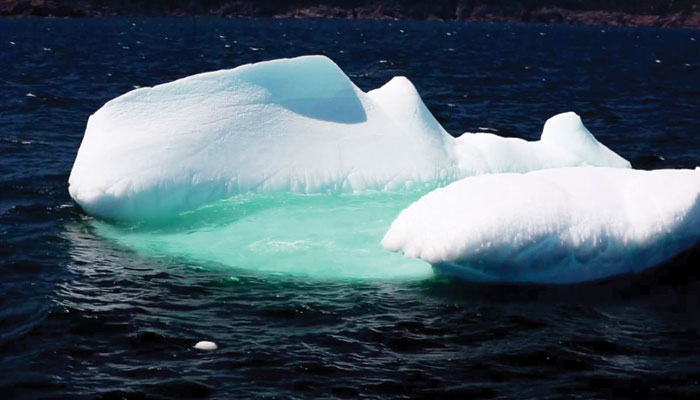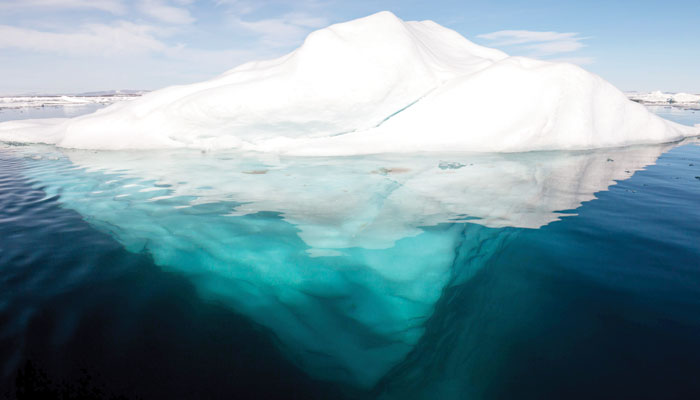April 10, 1912 was a historic day for the whole world when a ship named “Titanic” was operated by the “White Star Line” (British shipping company). On its maiden voyage, it was sailing from Southampton, England to New York, USA, tearing through the ocean with lightning speed. Titanium, steel and other precious metals were used in this ship with the help of modern technology, on the basis of which the creators claimed that it would be a lead wall against the sea. As if this ship was considered invincible. But this claim of experts fell like a wall of sand at that time.
When the stable ship was 400 meters away in the North Atlantic near southern Newfoundland, Canada, it was hit by a giant floating rock that was so violent that the ship lurched to the ground and was seen forever on the bottom of the sea. He drowned. The general idea was that night light and fog, mirage, optical illusions, poor binoculars and high speed caused the frozen floating pieces of ice not to be seen clearly and thus the ships collided. Rumors spread, but these were only speculations.
The most important reason for this accident was not paying enough attention to “science” in accordance with marine sciences. With the passage of time, when marine sciences (oceanography), navigation, geology and other scientific sciences expanded, some were surprised. What are the facts? For example, the unusual nature of floating ice in the sea is several tons and only a small part of it is visible floating on the surface of the sea, while most of it is underwater, which is extremely dangerous for shipping.
However, the quest for research after the disaster of the “Titanic” ignited the human mind, as a result of which it was first revealed to the world that these floating ice cells are strong, infinite and iron-hard ice rocks. occurs, which leads to a marine accident, although the scientific community unanimously suggested the name of this floating ice rock as “iceberg” in accordance with marine science. “Iceberg” is both derived and derived from an ancient glacier. As if both “iceberg” and glacier have the same pattern of creation.
The “water cycle” of some universes therefore provides fresh water when it melts, then both appear blue, which is because the “bodies of the glacier” are born. “Icebergs” Some of the red parts of white light with long wavelengths (Long Wave Length) are absorbed by the ice and short wavelengths of blue light (Short Wave Length) are transmitted and scattered. The farther the light travels through the snow, the bluer the snow appears.
Yes! The difference between the two is that the “glacier” is always connected to its place of origin (the continent), which refers to the “situ position” while the “iceberg” refers to the body of the glacier. After taking birth, he is separated from his place of birth and settles in a distant marine environment (continent). But the region appears to be floating in the open ocean within the limits of the glacier. Here it is to be remembered that the glacier giving rise to the “iceberg” is often found in colder regions. Where the temperature remains up to the freezing point (93.3) degrees Celsius.

Antarctica and Greenland Most of the icebergs in the Northern Hemisphere break off from Greenland, which is a sovereign territory of Denmark. Sometimes they were washed away by the waves and reached the “North Atlantic”. All icebergs in the Southern Hemisphere originate from the continent of Antarctica. At the point of birth, the glacier has two parts, lower and upper. In its lower parts there is a valley where there is a high temperature (melting point).
Because of this, this part of the glacier keeps melting and gives birth to different rivers. But in its upper parts, snow piles up all year round, which causes this part to go into the “calving” zone, due to which the “atoms” around the internal molecular structure of the ice. The sealing force in between begins to weaken and with the passage of time, the network of cracks in its body spreads everywhere and under the influence of the upper pressure and the force of gravity, large pieces and blocks of ice fall off the beach below. Enter the zone.
Ocean currents and currents carry it to the open sea where it is seen floating in the open sea. This floating ice rock is called an “iceberg” which is a danger to seafarers because 10% of it is exposed on the surface of the sea while 90% of it is in deep water. This is due to density. The density of ice is 0.92 grams per liter, while the density of water is 1.00 grams per liter (1 gram/liter), while the density of salt water is 1.03 grams per liter. Under water.
An “iceberg” on the other hand is solid. But still does not sink in water, which makes it less dirty than water (9%). The molecules in ice are not as tightly packed as in liquid water.In “icebergs” this situation occurs due to changes in temperature, which causes recrystallization in the “penal system”. Training takes place. When liquid water freezes at zero degrees Celsius and turns into ice or “iceberg”, the positive side of the water molecules bind to the negative side of the water molecules to form a special type of bonding.
This is called “Hydrogen Bonding”. As a result of this closure, a “three-sided” i.e. length, width, and thickness hexagonal crystal penumbra emerges that resembles a beehive. If the roof of an open beehive is compared to the penile structure of ice (iceberg), their molecular structure is less like a bundle than that of liquid water.
This is the reason that the “iceberg” is 9% less dense than water, due to which the “iceberg” is seen floating on the sea. This shows the unusual relationship between solid and liquid state, otherwise most substances are more dense in solid state and sink in water.
The size and shape of an iceberg is of great importance for its growth in the sea, for which it is necessary that the height of the iceberg above sea level be 16 feet and the depth 98-164 feet. An area of 5382 feet is covered by an “iceberg”. Regarding size, it is important to consider two aspects.
The first aspect occurs at sea level with regard to Bergy Bits, which consist of medium-sized chunks of ice from the breakup of several tons of icebergs that are 3 feet (but up to 16 feet) above sea level. less) and its perimeter is usually 1,076-3229 square feet. While the other side of it is the iceberg-like voice that signals danger. Which is called “Growlers”.
These are sub-fragments of an iceberg. The size of which is equivalent to a truck or “piano”. Some of the icebergs found in Antarctica are larger than the Italian islands in Sicily. While it is found tabular or non-tabular in terms of shape. Tabular icebergs have sharp edges and a spot-like top and are the most vulnerable of all icebergs to collisions.
Titanic was hit by a tabular iceberg on the starboard side underwater, causing a crack in the ship’s floor and causing it to sink. While the other dangerous “iceberg” is non-tabular. For example, Dome-like and Conic-like cylindrical spires on top of the tower. In order to control all these situations, the US National Ice Center (US National Ice Center) has completed this Antarctic iceberg in the polar regions. 1,600 meters (5,400 square feet) in size, so that its size and shape can be estimated on the surface of the sea or under water.
To achieve this goal, scientists use satellite light ships and on-site measuring instruments to assess the position, nature and duration of icebergs in the sea and to control maritime accidents. In this regard, a success was achieved in 1999 when the “National Ice Center” found that an iceberg larger than Rohodo Island in the United States had strayed from its path, but ” With the help of the Global Positioning System, it was estimated that he was floating on the Drake, an important waterway in Argentina, which was discovered in 2007.
These measures greatly reduced the number of marine accidents, which led to the second accident 100 years later, on January 13, 2012, with the Costa Con Crudia. When an iceberg enters warm water, it eventually It melts, which is estimated to be about 3000 years from the first snowfall of the glacier.
While “icebergs” are dangerous to ships, they are beneficial to human and animal life. For example, Antarctica is an excellent refuge for certain nomadic marine life (polar bears, penguins, fish and birds) from predators in other oceans.
The marine life here use the algae under the iceberg as food and not only survive but also increase productivity. Effective for survival.
In March 2000, NASA revealed the largest iceberg ever to emerge from Antarctica, measuring 300 km long, 40 km wide and covering 4,250 square miles, caused by melting polar ice caps and rising sea levels. And it will continue to play a positive role for centuries in terms of the reduction figures and the abundance and productivity of marine life.


